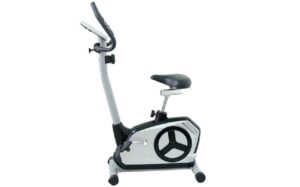
A crucial first step on the road to recovery from addiction or mental health problems is selecting the appropriate degree of care. Partial hospitalization programs for addiction (PHP) and Inpatient Care are two of the most often suggested treatment choices among the many that are available. While both provide organized support, there are notable differences between them in terms of intensity, setting, and applicability for certain people.
In this post, we will discuss the main distinctions between PHP and Inpatient Care to help you decide which could be best for your recovery. So, why wait? Let’s get started!
Inpatient Treatment Vs PHP Care An Overview!
Residential treatment, sometimes referred to as inpatient care, involves a patient’s full-time attendance in a treatment center for a predetermined amount of time, typically 30 to 90 days or longer. With this kind of care, patients are given medical monitoring, support, and treatment around the clock in a highly structured setting.
The main idea behind inpatient rehab is to provide a safe, healing atmosphere free from everyday stressors and distractions so that you can concentrate solely on your recovery process. On the other hand, the Partial hospitalization program in Ohio provides an in-between option for medical care: inpatient and outpatient. Patients usually spend five to seven days a week, for several hours a day, at the treatment facility. In the evenings, they return home or to sober living arrangements.
Compared to inpatient rehab, these programs offer greater freedom and liberty. If you need rigorous therapy but are unable to commit to a residential program for whatever reason, this may be a viable choice for you.
Key Features of PHP and Inpatient Care
To finalize which treatment care is best for you, knowing the features can help you.
Important features of Inpatient Care:
- 24/7 Supervision: Inpatient care provides medical specialists with round-the-clock supervision, guaranteeing prompt assistance in the event of emergencies or crises.
- Structured plan: To promote rehabilitation, patients adhere to a rigid daily plan that includes meals, therapy sessions, group activities, and leisure time.
- Safe Environment: Patients may fully concentrate on their recovery when they are in a controlled setting, which eliminates outside distractions and triggers.
- Intensive Therapy: Individual counseling, family counseling, group therapy, and occasionally more specialized treatments like trauma therapy or dual diagnosis treatment are all provided by inpatient programs.
Important Features of the Patient Hospitalization Program
- Daily Intensive Treatment: PHP offers part-time, intensive therapy that is comparable to inpatient care, enabling patients to get all-encompassing care without having to stay overnight.
- Flexibility: Depending on their development and the format of the program, patients can continue to live at home, take care of their families, or even work part-time.
- Therapeutic Support: PHP offers more flexibility and freedom in terms of therapeutic services, medical monitoring, and access to both individual and group therapy, just like inpatient care does.
- Gradual Transition: Following an inpatient program, PHP is frequently utilized as a step-down level of care to assist patients in returning to their regular lives while still receiving a high degree of support.
Making the Right Choice- Inpatient Vs PHP!
Inpatient care and PHP both provide beneficial assistance during the healing process. Making a decision based on your unique needs will guarantee that you receive the kind of care required to maintain sobriety and mental health. If you are unsure which treatment is best for you, contact the Ohio Addiction Recovery Center.






